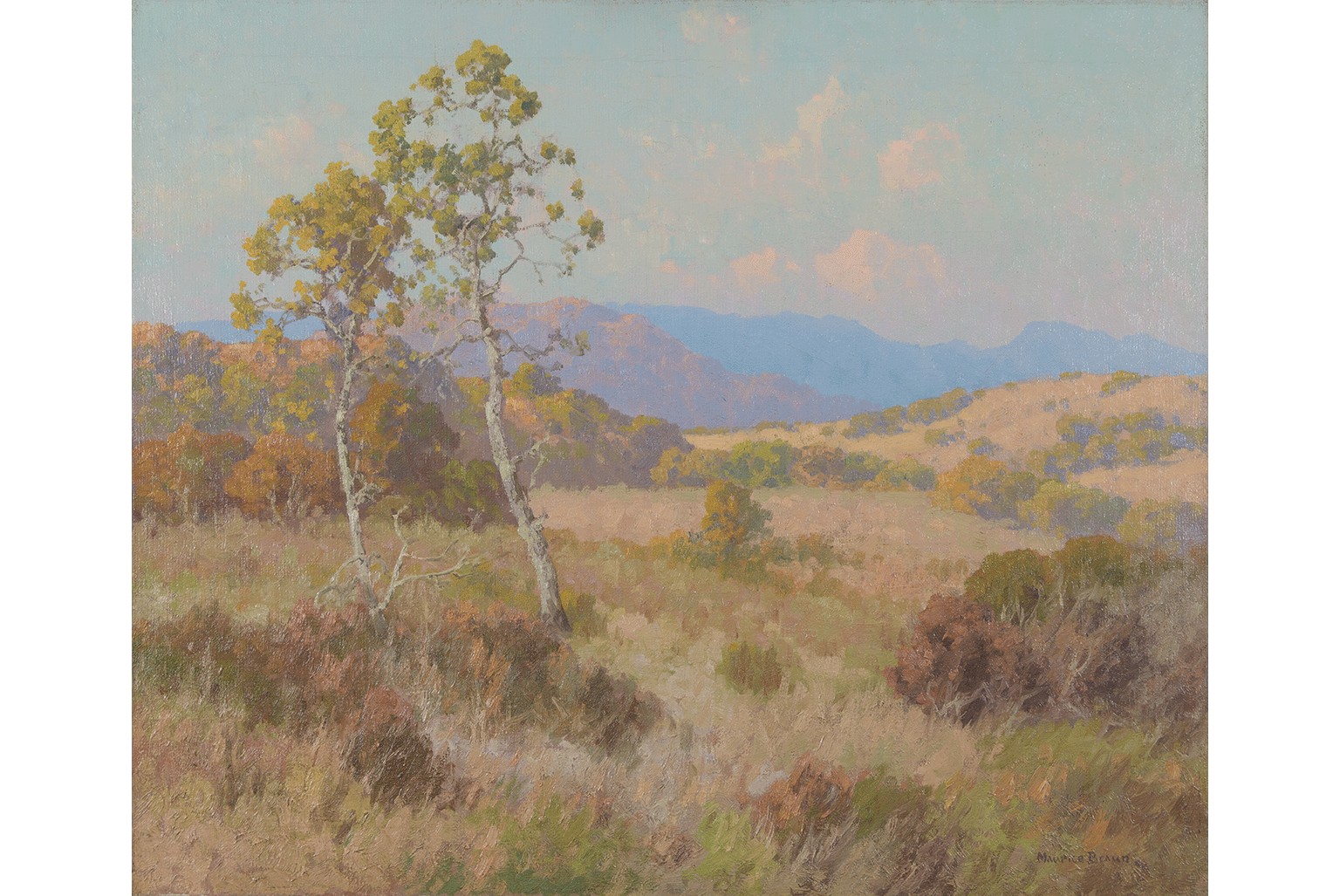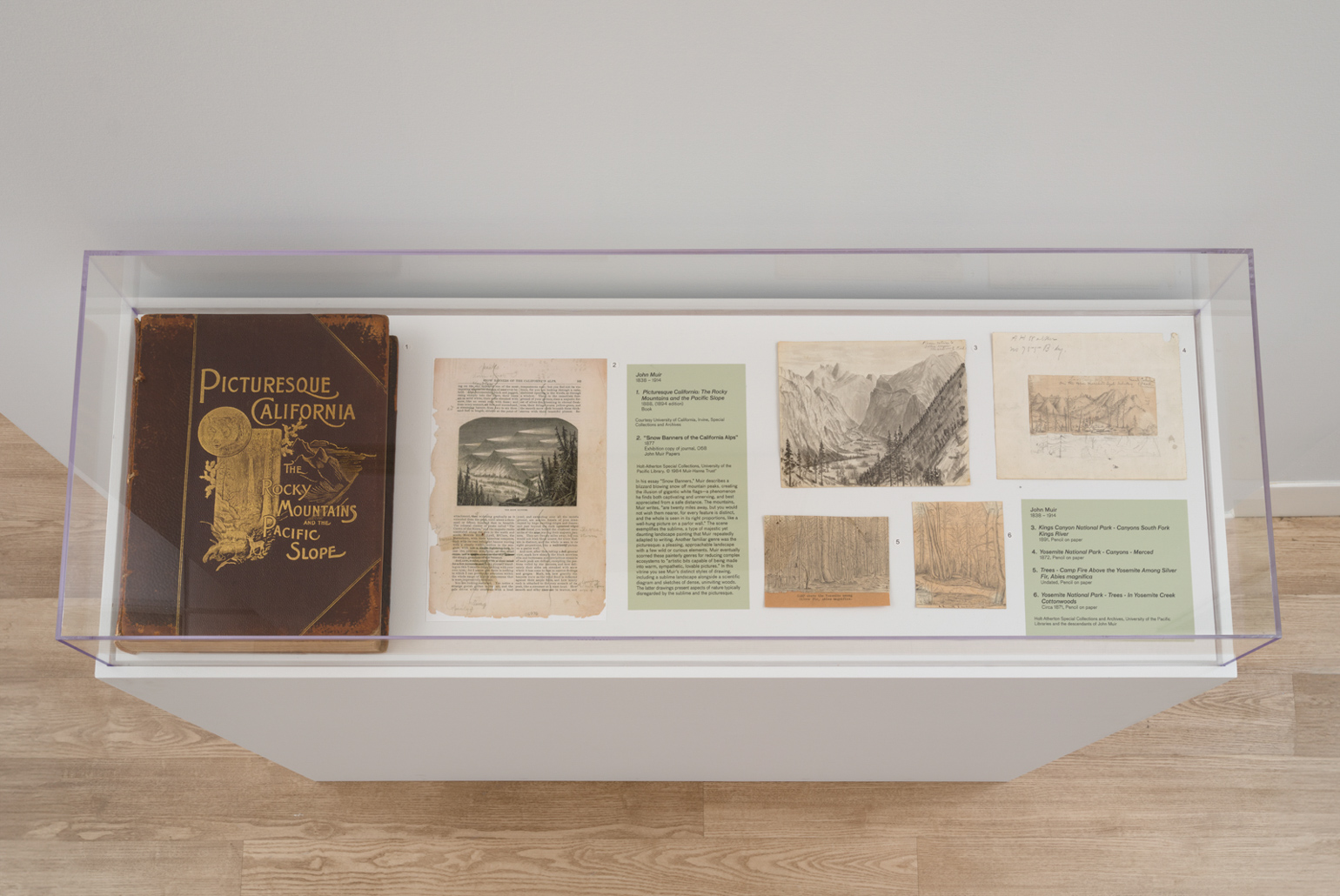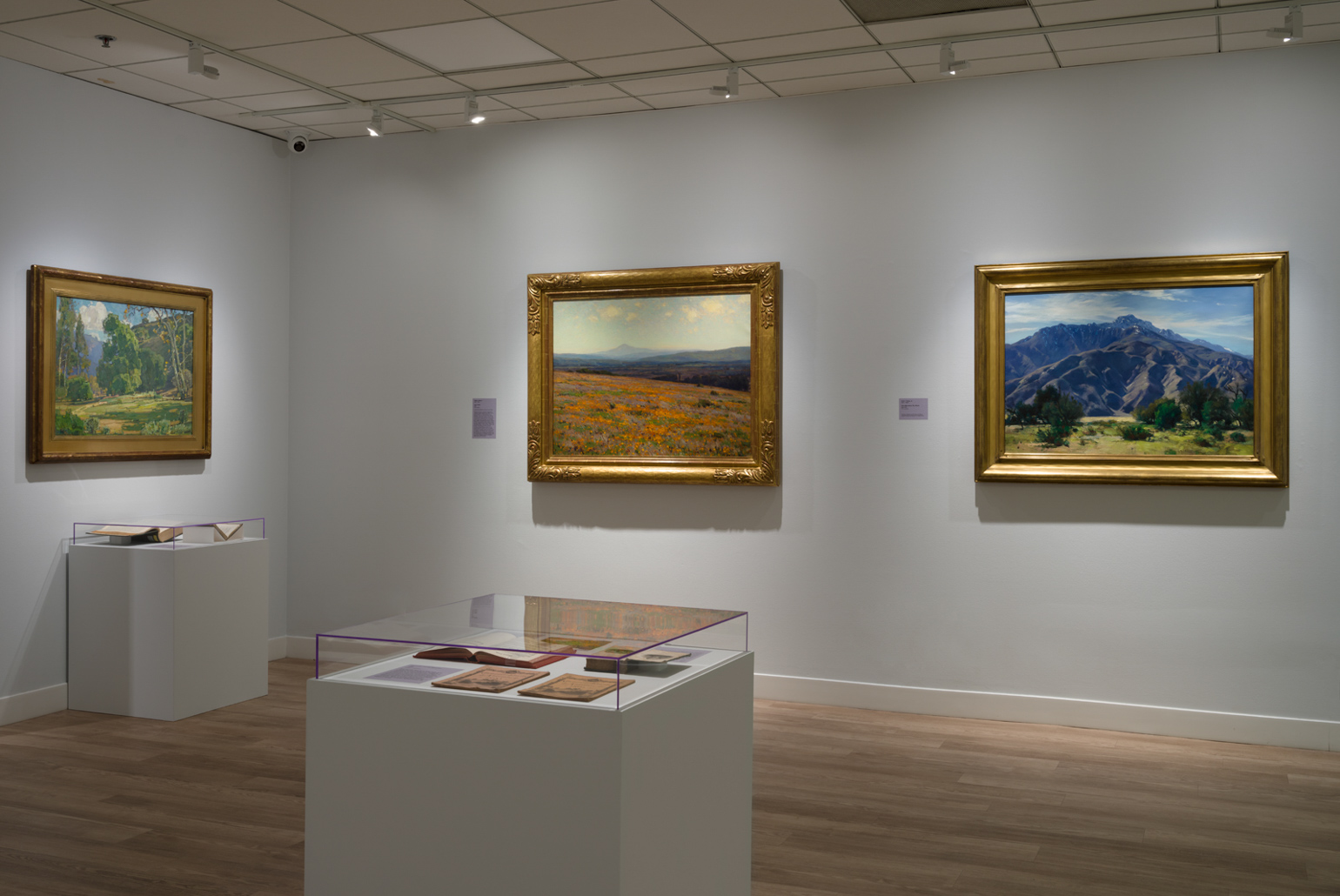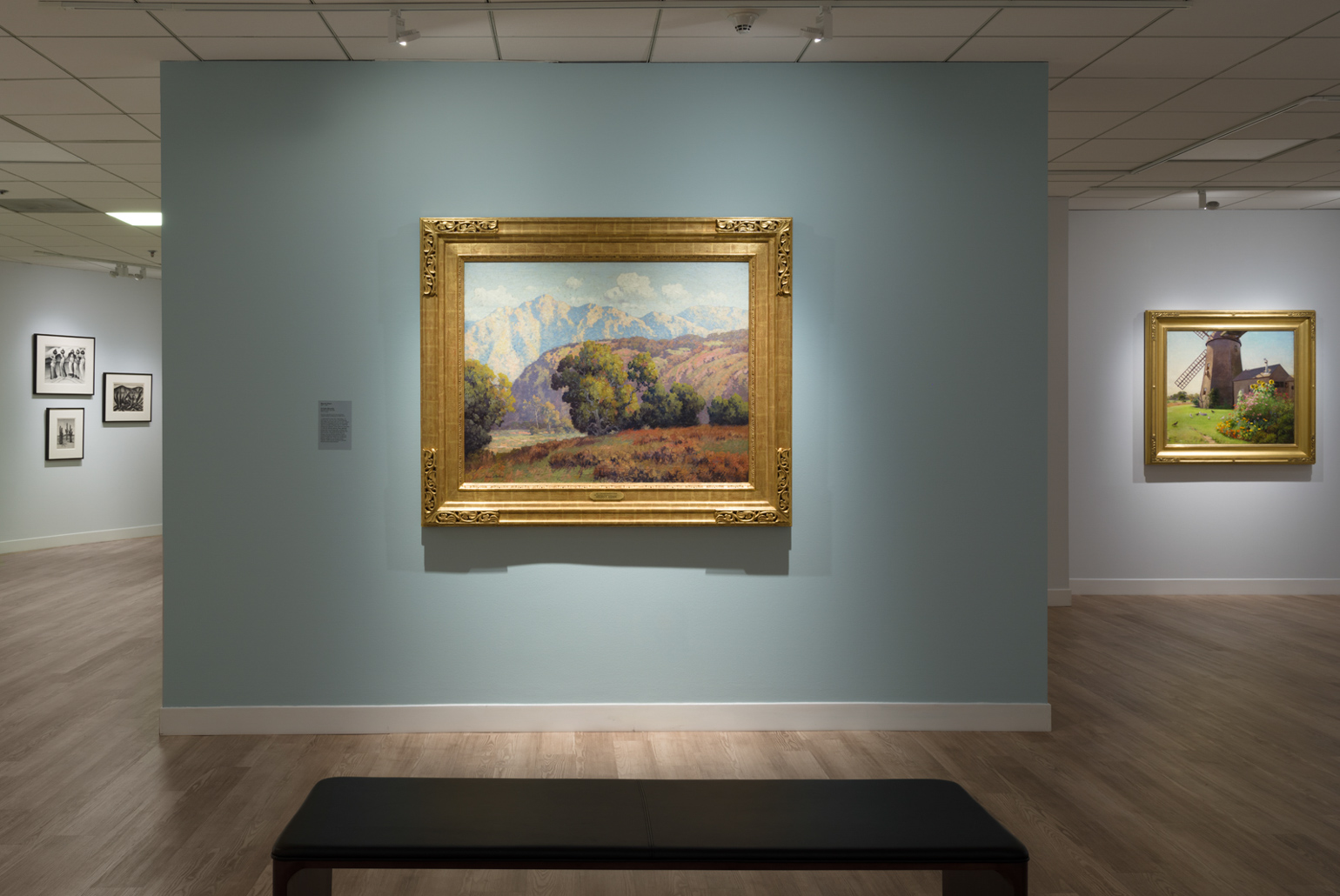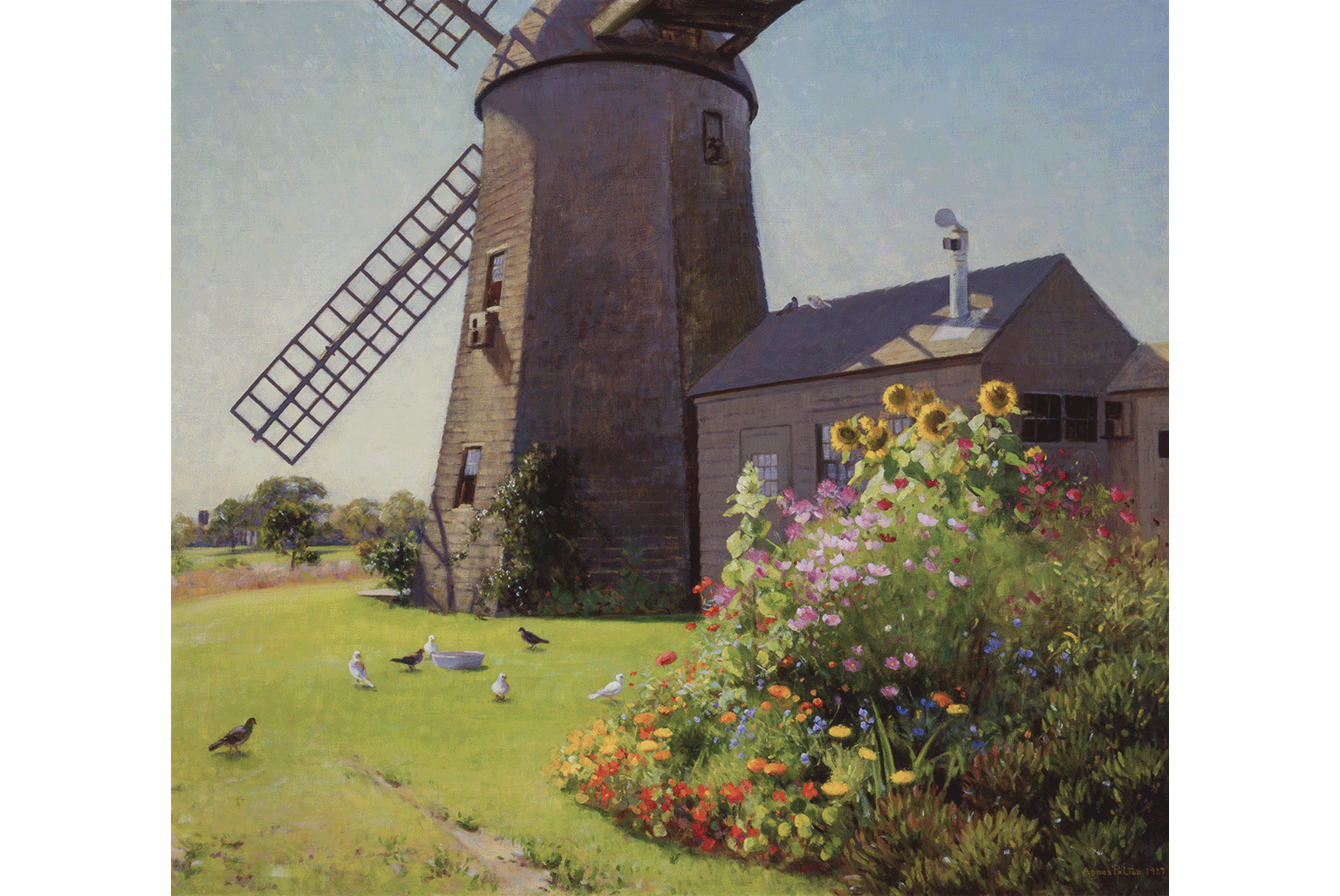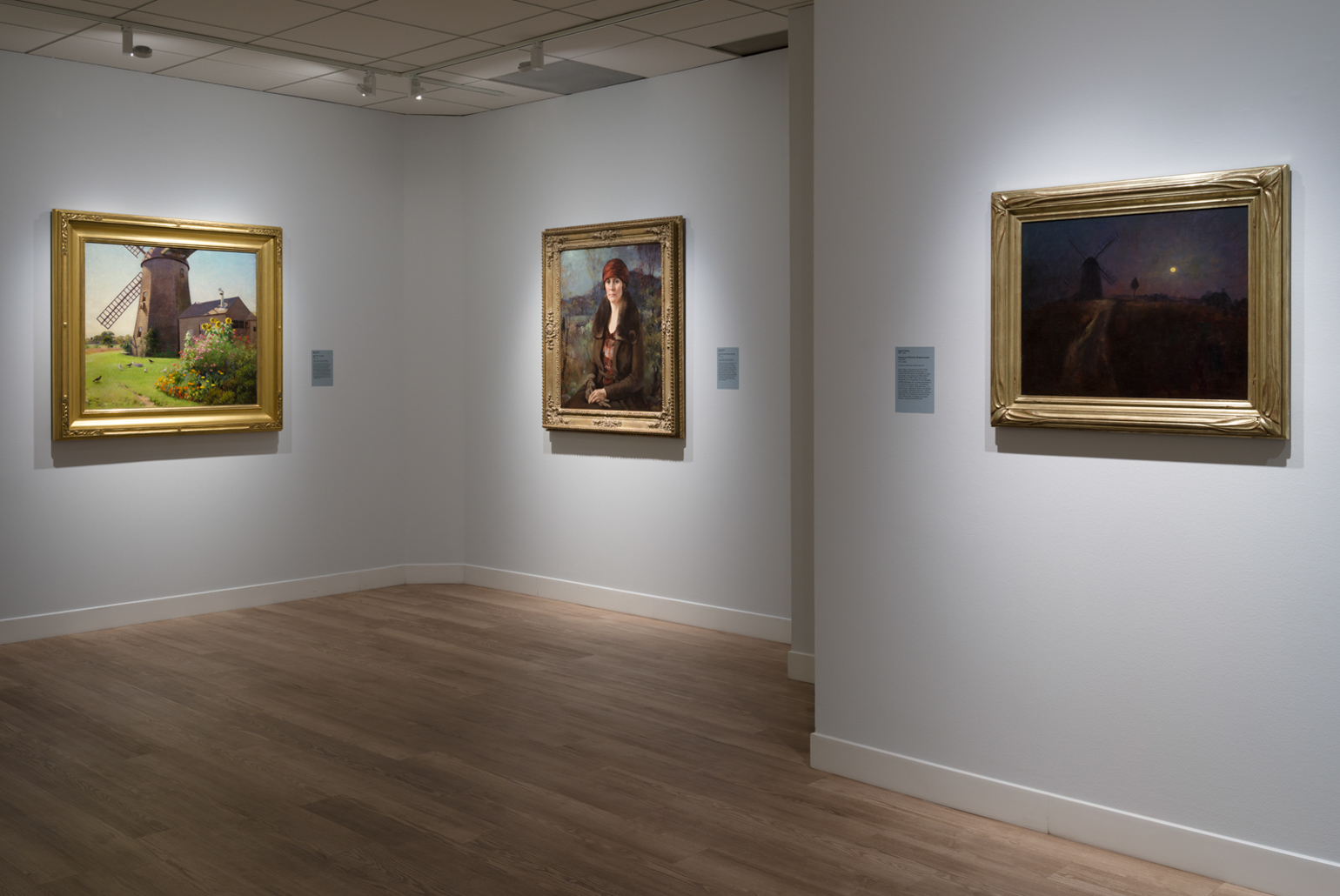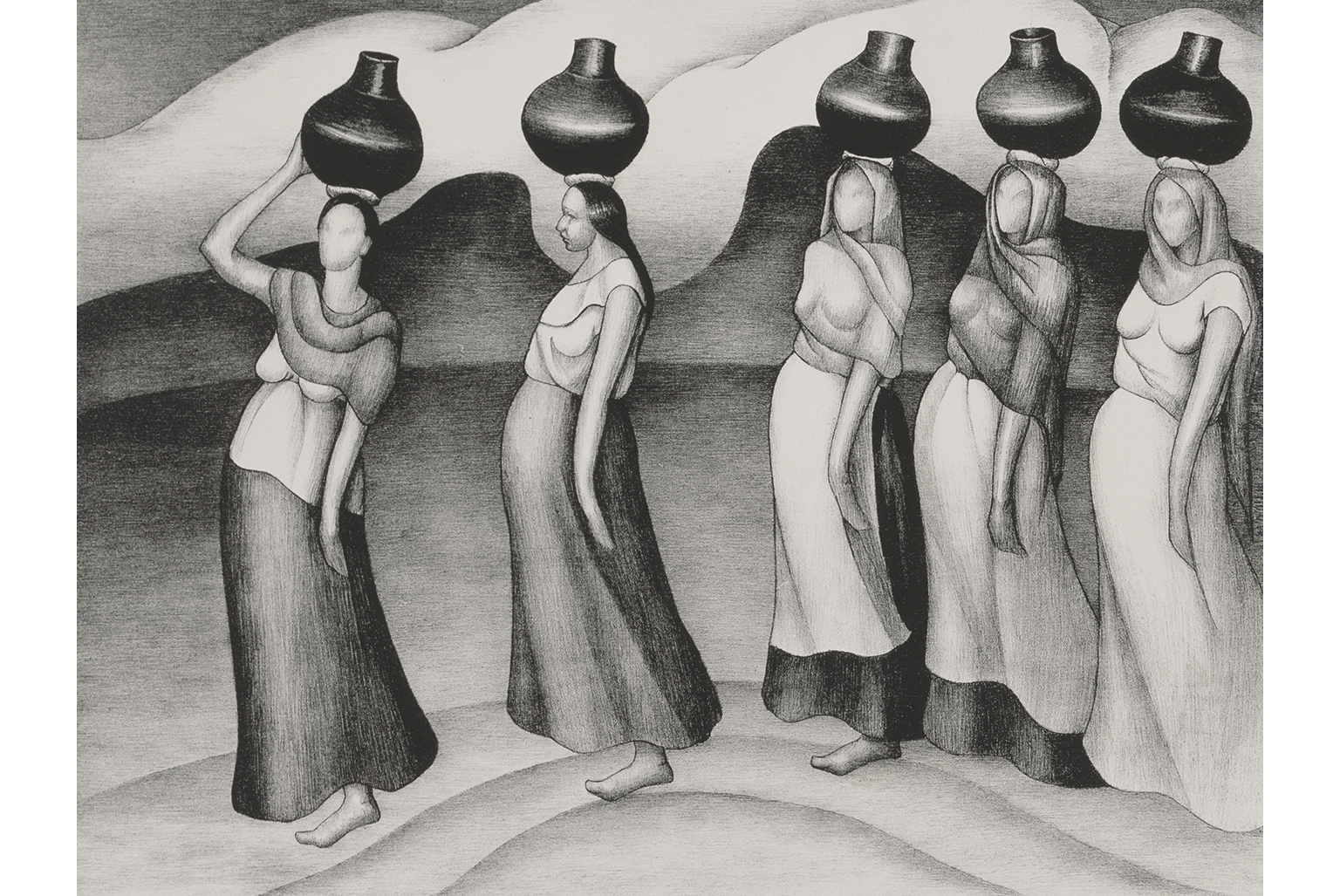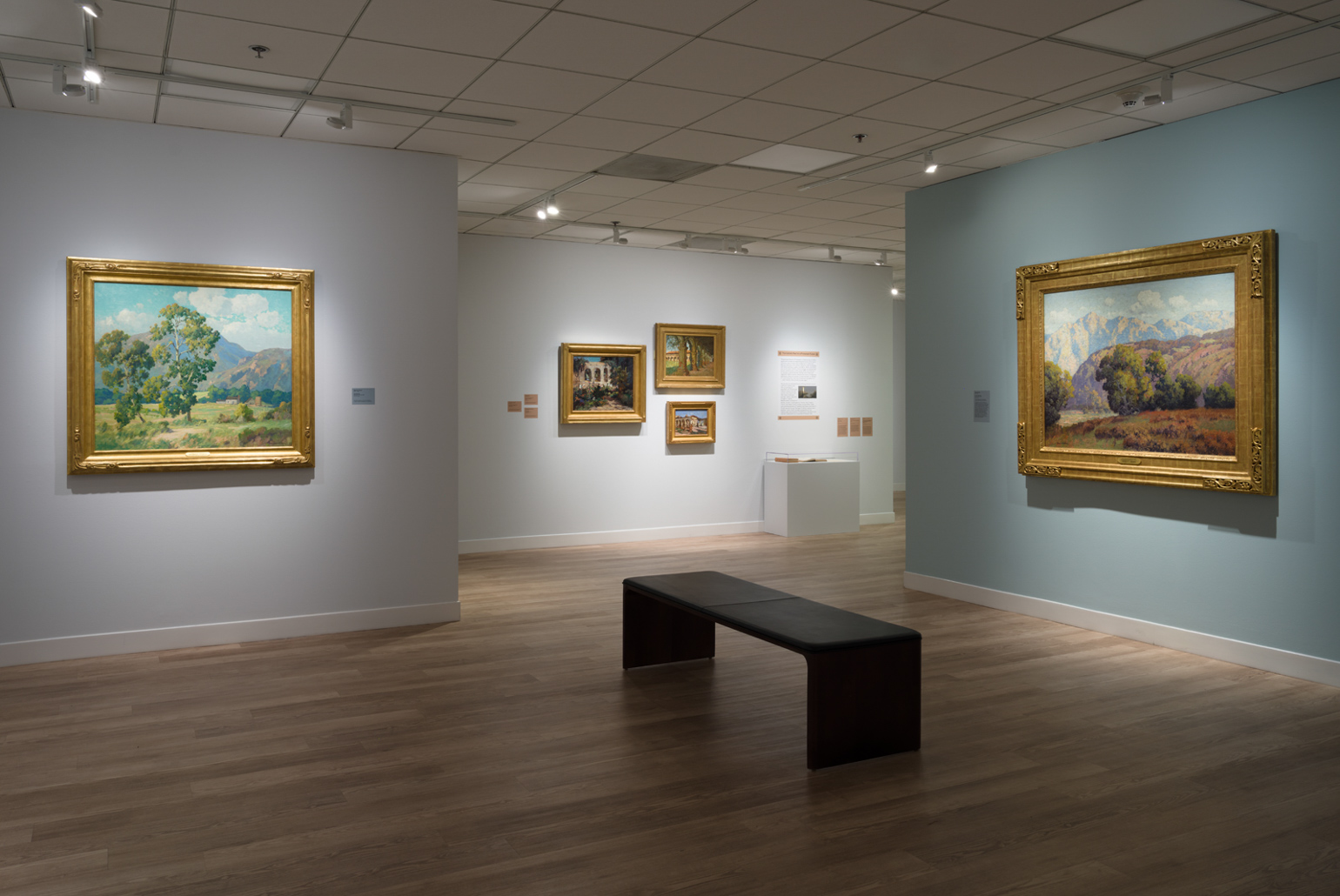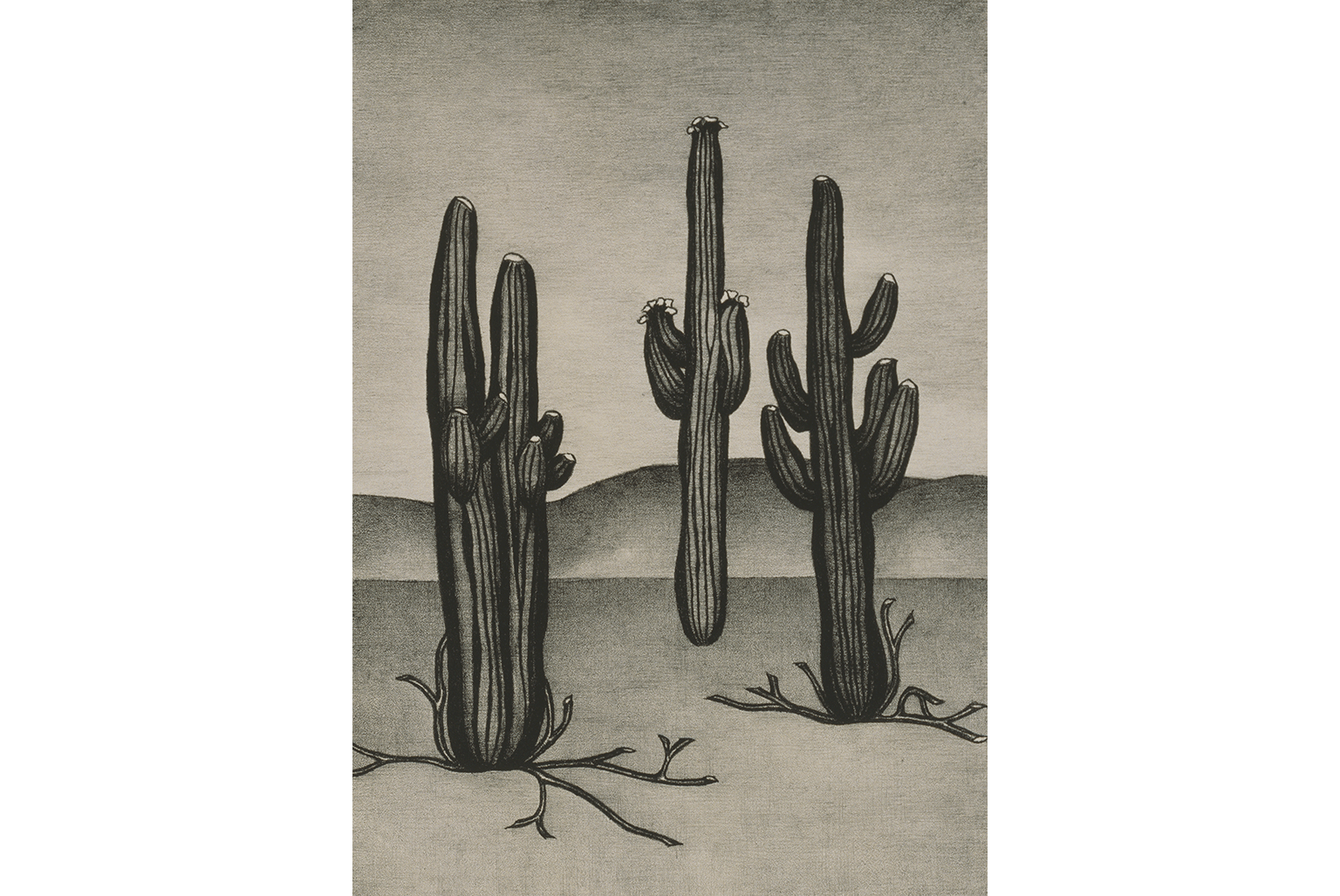Spiritual Geographies: Religion and Landscape Art in California, 1890 – 1930
Curated by Michaëla Mohrmann, PhD
Assistant Curator, Langson IMCA
March 2 – June 8, 2024
Spiritual Geographies explores how different religious outlooks shaped landscape painting in California between 1890 and 1930. During this period, established churches as well as new religions took root in the region. These communities of faith were also struck by the state’s awe-inspiring landscape, which reconfigured their understanding of the sacred and divine. Landscape paintings by local plein air artists reflected these changing spiritual attitudes, contributing to California’s national reputation as an inherently mystical place accepting of different belief systems.
The exhibition brings together 36 works of art as well as rare theological books and archival materials that trace how landscape imagery operated within religious discourse. The works are divided into four thematic sections that examine the impact of Catholicism, Theosophy, Protestant Evangelism, and nature mysticism on representations of nature. The presentation also considers the contradictions and limits of California’s religious tolerance by recognizing the original spiritual meanings that landmarks and plants hold for the region’s Indigenous peoples.
Download Recommended Reading Guide
Download Teacher Resource Guide
Descargar texto de la exhibición en español
Download Perspectives/Perspectivas: Paintings of California Missions
Exhibition support provided by Traditional Fine Arts Organization

